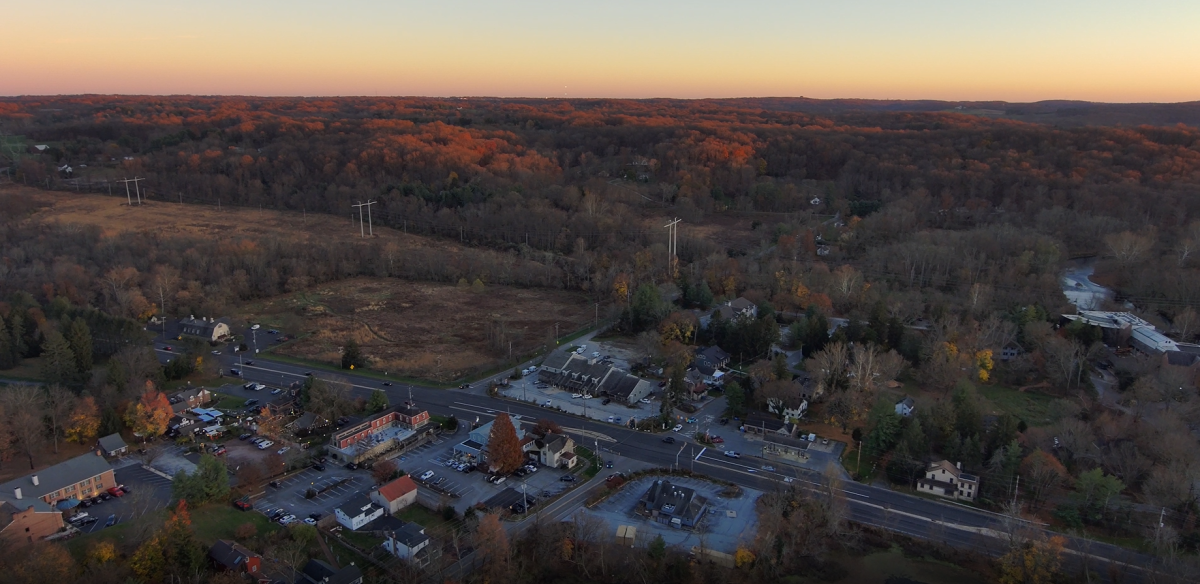
The land was inhabited by the Lenni Lenape or Delaware Indian centuries before the Europeans arrived. The Indians' town sites were located along the waterways at major communication and trade junctions, with paths laid out between villages and tribes. These much traveled footpaths through the woods became the first roads.
It is believed that the early English Quaker settlers like the Brintons and the Gilpins used caves as their first shelters. According to local tradition, both families were befriended by the Lenni Lenape Indians. Another early name in the Township's histories Chadsey (later shortened to Chads). The family's name became associated with the ford on the Brandywine and has been a place name since the 1700s.
Ye Great Road to Nottingham, now Baltimore Pike/U.S. Route 1, was one of the five main routes of east-west travel from Philadelphia in the early 18th century and was laid out from Baltimore to Chester in 1707. There was, however, only a ferry across the Brandywine. It began operation in the 1730s and was officially sanctioned in 1736. It continued in operation until about 1827 when work on the first bridge was begun.
Historically, one major but brief event, the Battle of Brandywine, affected the development of the Township and the course of the American Revolution. The Battle took place September 11, 1777. Although a defeat for Washington and his struggling American troops, it marked a turning point in the War. The grand strategy designed by the British General, Lord Howe, to weaken the patriot cause had failed. It was not a coincidence that there was battle action near Chads' Ford, for it was at the fording places in the Brandywine that the troops of both camps could cross en route to Philadelphia to take it or defend it. During the Battle, many local farmhouses were taken over by the English and American troops; in the aftermath, many of them were plundered.
In 1789, Delaware County was carved out of Chester County, and the Township known as Birmingham was divided, its northern border following along farm lines.
The harnessing of water power for use in mill operations was a major factor in the growth of the area during the 1800s. The mills not only manufactured goods, such as gun powder and paper, they also processed the grains and timber grown in the area.
The establishment of a railroad line through Chadds Ford in 1858 also played a significant role in the economic growth of the Township. Railroad spurs were laid out to accommodate the kaolin companies where the fine white potter's clay was mined at the turn of the century. The railroad also contributed to the gentrification of Chadds Ford, enabling the city people from Wilmington and Philadelphia to discover the lush rolling hills of the Brandywine Valley. To have a summer house in Chadds Ford became the vogue.
It was about this time that Howard Pyle began his summer art school, which attracted students from all over the country. One of them, young N.C. Wyeth from Massachusetts, came to study under Pyle and never left. From Pyle's studio and its students, the world famous Brandywine School of Art developed, fostered now by succeeding generations of Wyeths, Andrew and his son, Jamie.
According to the U.S. Census Bureau, the twentieth century has seen the Township grow from 733 people in a semi-rural setting to a burgeoning bedroom community of 3,118 in 1990. By the 2010 census count, the Township had a population of 3,640. The Delaware Valley Planning Commission's population forecast suggests that by 2025, Chadds Ford Township will have 5,200 residents -- an increase of 66.8% from the 1990 Census count.